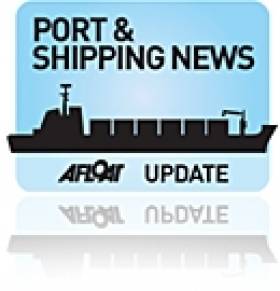Displaying items by tag: Arklow newbuilds
South Korean Newbuilds for Arklow Shipping
The latest newbuild for the Arklow Shipping Ltd (ASL) fleet, Arklow Meadow is due to depart from the Mokpo Shipyard Corporation, South Korea in three weeks, writes Jehan Ashmore. The 136m dry-cargo vessel will seek a cargo for the delivery voyage from the Far-Eastern shipyard to Europe.
Arklow Meadow represents the fourth in a series of six newbuilds ordered, with lead-ship Arklow Manor entering service in 2009. The following newbuilds, Arklow Marsh and Arklow Mill where delivered from the shipyard to her owners during 2010.
All the 'M'-class newbuilds are 14,000 tonnes and have four-holds with a total grain capacity of over 18,000 cubic square-metres.The vessels are powered by a MaK 6M 43C main engine which has a 5,400KW capacity through a Jake reduction gear-box and fitted to a Rolls Royce controllable pitch propeller.
ASL operate a modern fleet of dry-cargo short-sea traders and bulkers throughout Europe, Scandinavia and to the Mediterranean Sea using tonnage varying in size from 3,000-14,000 tonnes. Most to the vessels are of a singledeck, box hold design and some are fitted for container stowage. The majority of cargoes are grain, general dry-bulk and bulk commodities including those classified under IMO regulations.
ASL was established in 1966 by several family ship-owning companies and has progressed to become one of Ireland's leading indigenous ship-operators. The company has its headquarters alongside the banks of the River Avoca, Arklow in addition a management team also based in the Netherlands. Most of the 39 strong fleet are registered in the Co. Wicklow port, flying the Irish tricolour while the rest of the fleet are under the Dutch flag and registered at Rotterdam and Zaandam.
























































